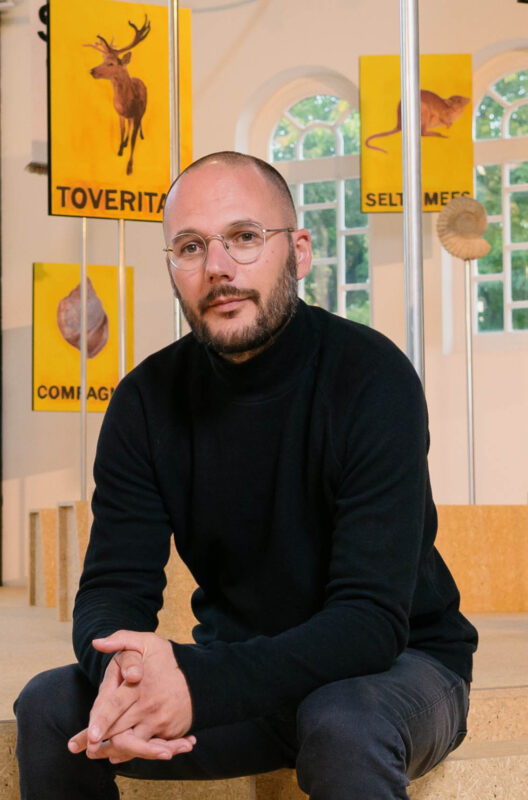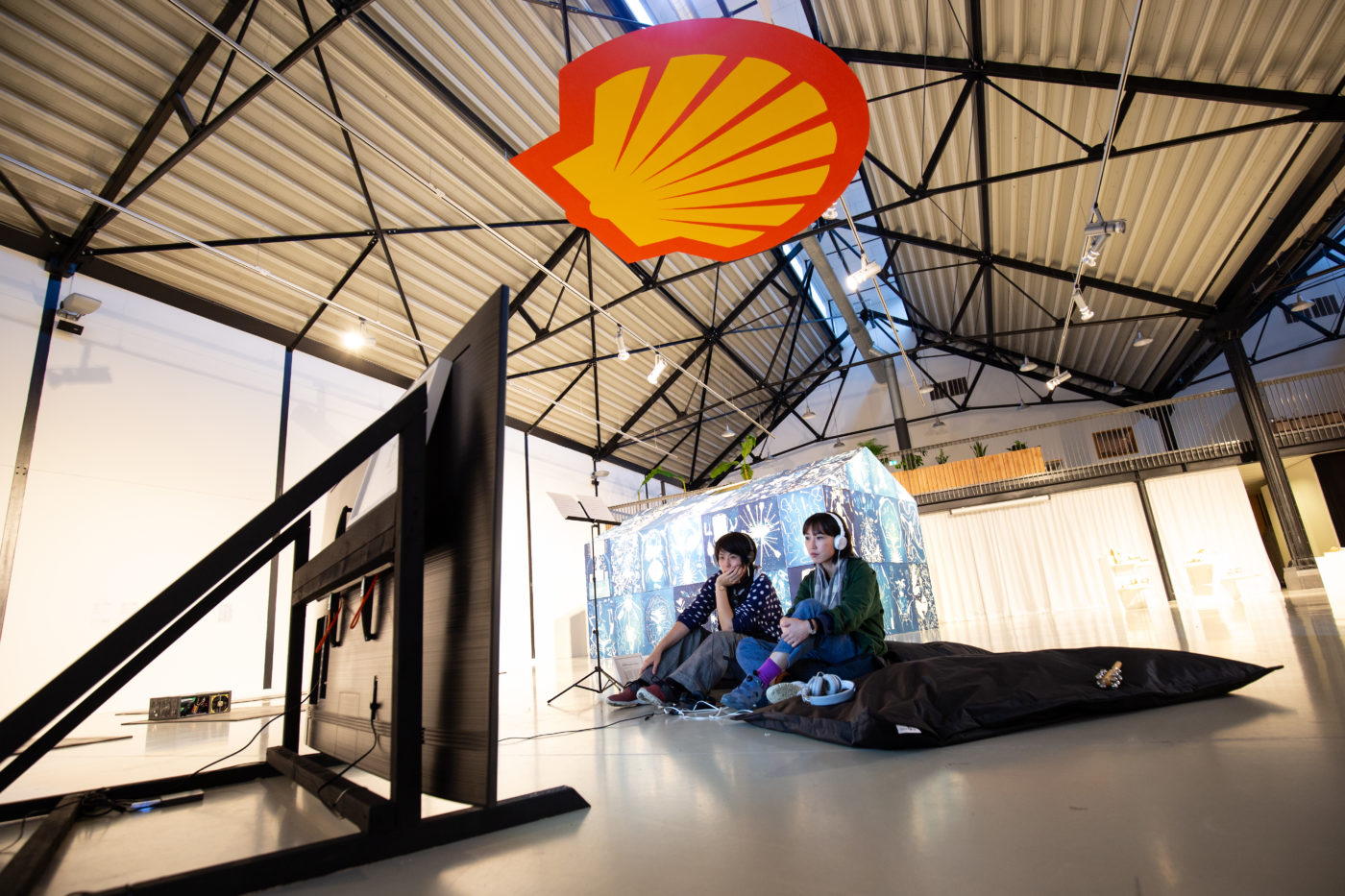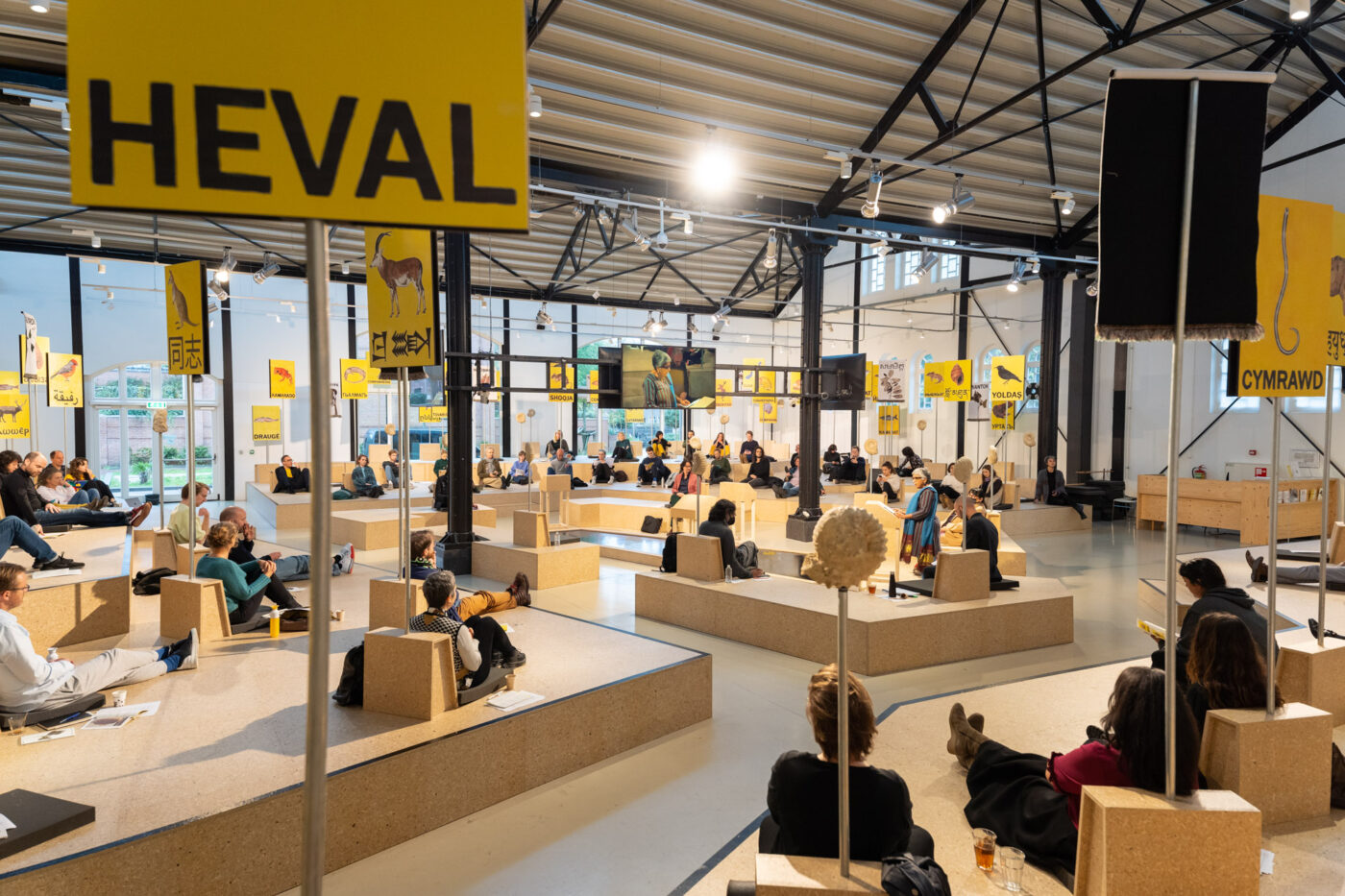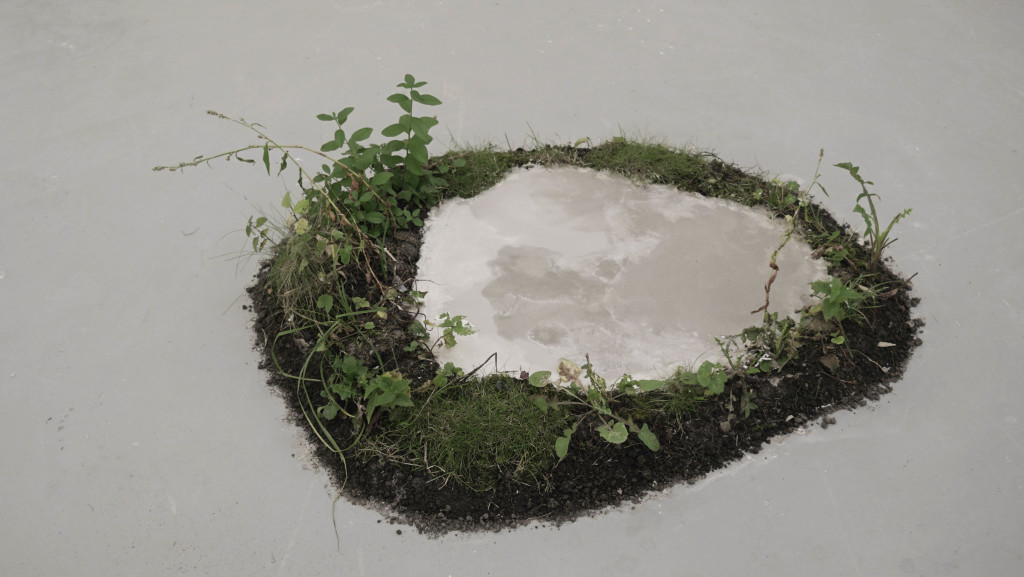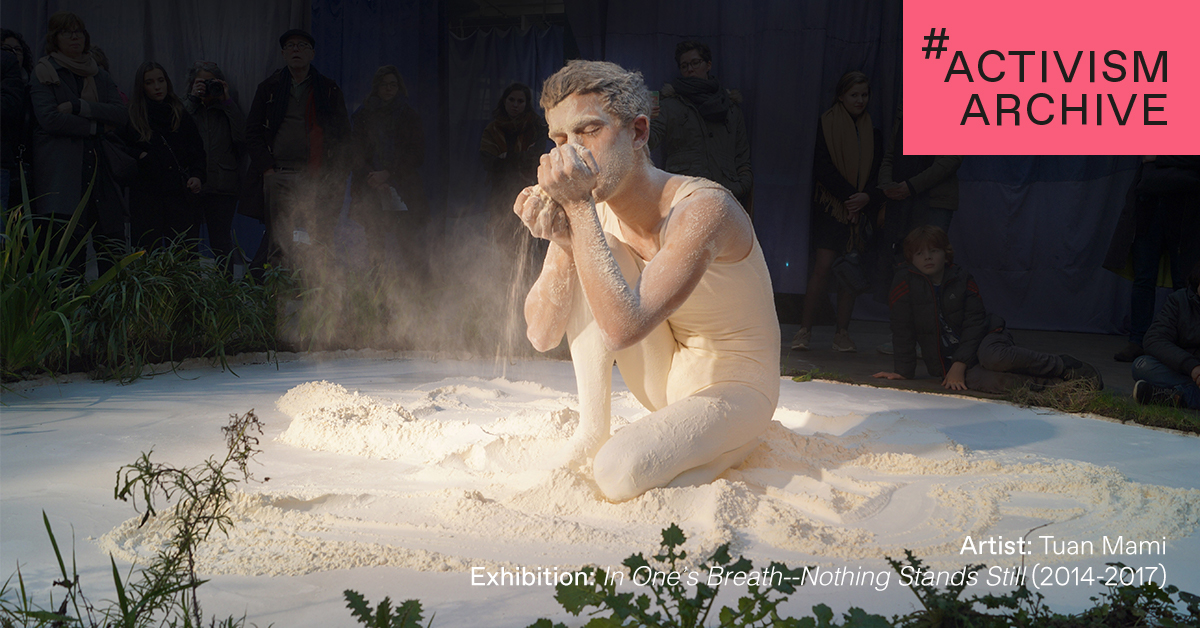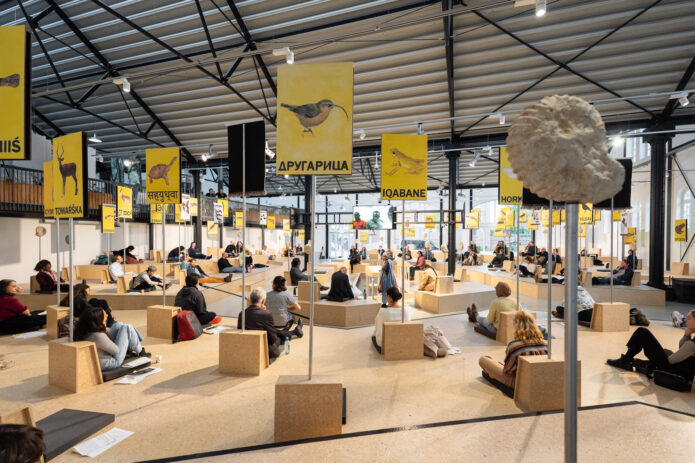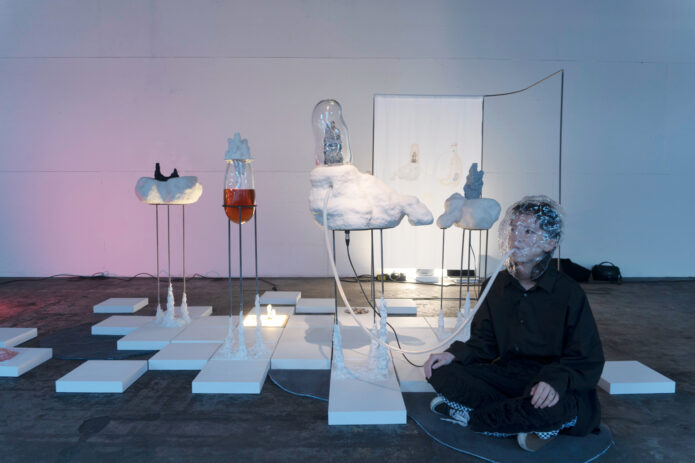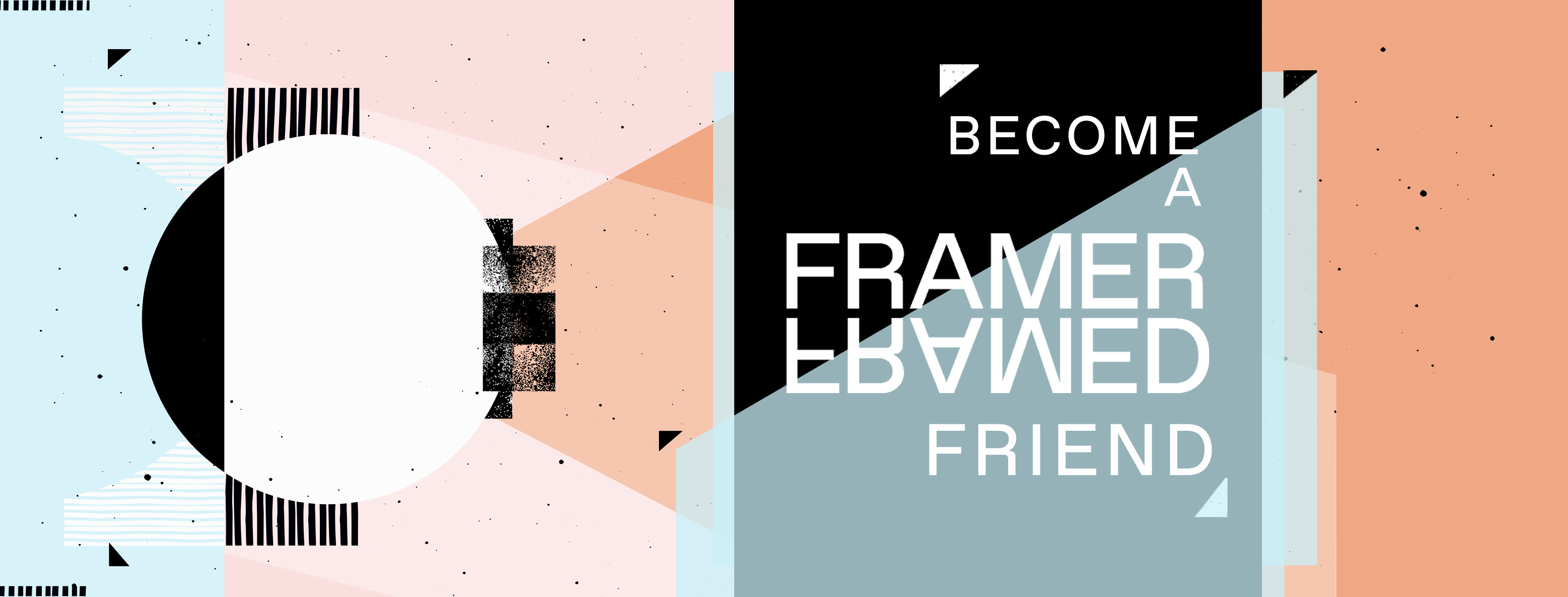Climate and Environmental Activism - #ActivismArchive
In this series, Framer Framed highlights artist’s work from previous exhibitions and their relation to climate and environmental activism.
The initiative for #ActivismArchive came from Ashley Maum, as a way of supporting the Fridays for Future climate strike online. The archive hopes to convey the power and possibility art holds in the face of (environmental) struggle.
‘We don’t want the right to live, we want to live.’
The Court for Intergenerational Climate Crimes
We’ve returned to this archive to add an important project confronting the role of law, corporations and states in the climate and ecological crises, titled the Court for Intergenerational Climate Crimes (CICC). The CICC is a collaboration between Framer Framed, academic, writer and activist lawyer Radha D’Souza and visual artist Jonas Staal. the first iteration of the CICC took place at Framer Framed in Amsterdam from 25 September 2021 – 13 February 2022. For over a year the collective did research for the project’s culminating event – four days of public hearings against the Dutch State, Unilever, ING and Airbus for their intergenerational climate crimes.
Each day an expert begins the hearings as prosecutor, introducing the accused and laying out the sort of climate-harming activities to be evidenced that day. This was then followed by the evidentiary testimonies of three witnesses, speaking as members of activist, environmental and Indigenous groups from around the world. The hearings took place under the guidance of four judges: Radha D’Souza, Sharon H. Venne (Notokwew Muskwa Manitokan), Nicholas Hildyard and Rasigan Maharajh, who each brought unique experience and knowledge as they reflected on the cases.

Photo: Ruben Hamelink
At the heart of the hearings, is a critique of the co-constitutive relationship between the law, transnational corporations and states in the perpetration of climate crimes across generations, affecting the conditions of future planetary life. The performative tribunal takes place in an arena-like installation, where the audience – acting in the role of a public jury – sits surrounded by the presences of extinct species. These species take the form of paintings and weavings and represent a fraction of the species extinction caused by human activities within systems of settler colonialism and capitalism. They form part of an archival network titled Comrades in Extinction. Each species is depicted alongside the word ‘comrade’ in different languages, emphasising the practice of more-than-human solidarity in the CICC’s climate justice.

Photo: Ruben Hamelink
The title for this entry is a quote from Professor Angelica de Freitas e Silva, who joined the CICC as jury member during the hearing against ING and presented a moving statement on climate injustice in her native Brazil. The four CICC hearings are now available online; they can be watched in full on Framer Framed’s Youtube channel or in parts on Vimeo.
Mandala / Harmony
The work of Arahmaiani
For our last #ActivismArchive, we turn to our current exhibition On the Nature of Botanical Gardens (2020) and Arahmaiani’s installation work, Memory of Nature (2013-2019). Arahmaiani has practiced for a long time at the intersections of environmental, social, cultural and gender issues. For Memory of Nature, she was inspired by her work with a Tibetan community of monks.
The form of the work is based on the Buddhist mandala and relates to philosophy but also environmental science. As a representation of the universe, the mandala has to do with interconnection and living in harmony. Integral to this for Arahmaiani is the recognition of human beings, ourselves, as part of nature, as opposed to the current view of nature as object.
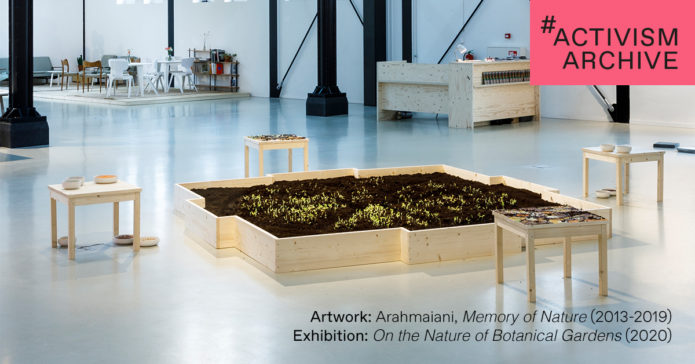
Photo credit: Eva Broekema / Framer Framed
Another element of Memory of Nature is the surrounding tables with seeds and beans that invite viewers to participate by making their own mandalas, an exercise in social action and connection.
In preparation for Framer Framed’s re-opening on 2 June, we have been working in the soil of Memory of Nature to re-plant and grow mung beans. Arahmaiani’s installation has certainly changed the Framer Framed team’s actions and thinking around plant life, nature and our connected relationship. We hope that the work can have a similarly meaningful impact on you, our visitors.
Click here to watch our virtual studio visit with Arahmaiani, where she talks more about Memory of Nature and her artistic practice.
To Inform, To Act
The work of Mídia NINJA
This week we add the Brazilian journalist network, Mídia NINJA, to the #ActivismArchive. Framer Framed hosted two members of the Ninja network for the public program Mídia NINJA: Counterattack, as part of a series of events on indigenous activism and land rights during the exhibition HERE/NOW: Current Visions from Colombia (2019). The Ninjas have a very active social media network, which is great to follow to stay informed on their work with indigenous communities and opportunities for support.
Mídia NINJA first emerged during the public protests in Brazil in June 2013, during which they broadcasted from the street and counteracted misinformation from major media outlets. The collective sees democratic communication as a human right and uses new technologies to defend the public interest, cultural diversity, and the right to information.
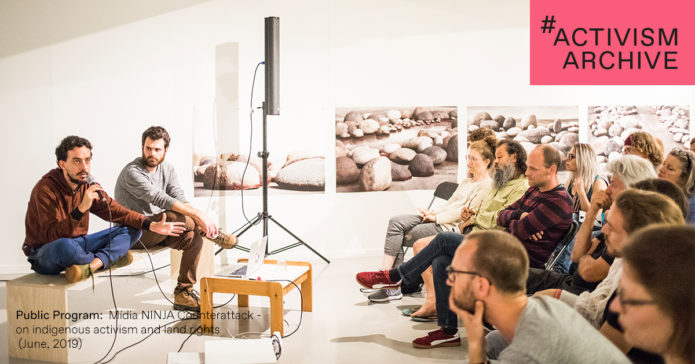
Photo credit: Marlise Steeman / Framer Framed
Their practice often includes helping indigenous organizations to develop their own media platforms, instrumental for publicizing and communicating their own situations. Mídia NINJA is also very active in the fight against environmental devastation, specifically as it impacts the Amazon rainforest and its indigenous inhabitants. In 2019, the Ninjas co-founded Brazil’s first environmental activism app called 342 Amazônia, which helps spread critical information on the ongoing battle for the region’s protection.
On the Framer Framed social media pages, we shared a video message from Brazilian activist Sônia Guajajara. She talks briefly about the difficult conditions faced by indigenous populations in Brazil, with many people in need of better communication, living and heath conditions. Guajajara goes on to thank Mídia NINJA for their part in spreading much-needed awareness of the issues and sends big hugs to the Dutch and Framer Framed. To watch the video, click here.
On Shell
The work of Rumiko Hagiwara
For this week’s #ActivismArchive, we’re highlighting Rumiko Hagiwara’s video installation, I want to be a shell (2019), from our recent exhibition Elsewheres Within Here (2019) I want to be a shell retraces the journey of a Japanese seashell into one of the most recogniseable commercial symbols in the world: the logo for the Shell oil and gas company. Along the way, Hagiwara relates the transformation of the shell to her personal experience as a Japanese person who has settled in the Netherlands, reflecting on (mis)translations of cultural identity.

Photo credit: Maarten van Haaff / Framer Framed
While watching the video, Hagiwara places the viewer underneath a massive Shell logo, making us aware of the looming capitalist presence and our own complicit relationship with it. Similar to the Milena Bonilla’s Money (2012), which we featured in the #ActivismArchive on 1 May, Hagiwara intervenes in the sadly ironic use of a natural symbol for the logo of an environmentally harmful company.
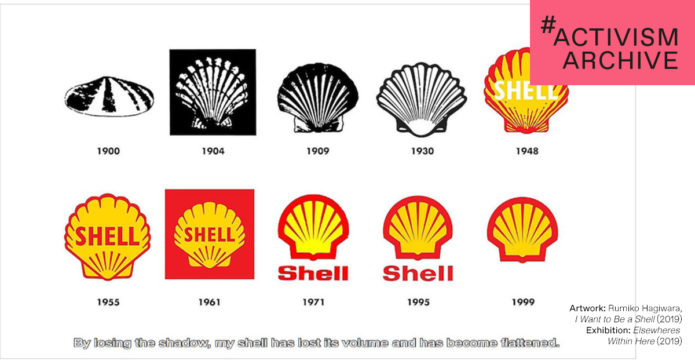
Film still from ‘I want to be a shell’
Central to Hagiwara’s narrative of the shell is how it lost its shadow, with the gradual flattening of the Shell logo over the years. Understanding a shadow as a sort of reflection, its loss could speak to a loss of reflexivity, with the Shell company moving further and further from the reality of the seashell, the natural world and its effect on it. I want to be a shell traces the interconnected histories of an ordinary encounter with nature, extreme capitalist growth, migration and self-transformation.
Tactful Media
The work of The Yes Men
On the 20th anniversary of the 1984 Bhopal gas leak, a spokesperson for Dow Chemical announced on BBC World News that Dow would finally accept full responsibility for the disaster and planned to liquidate the $12 billion worth of its subsidiary Union Carbide India to appropriately compensate its hundreds of thousands of victims. The newscast was soon revealed to be a hoax staged by media pranksters The Yes Men, who we add to the #ActivismArchive this week. Video from Dow Does the Right Thing (2004) was included as part of Framer Framed’s exhibition As If: The Media Artist as Trickster (2017).
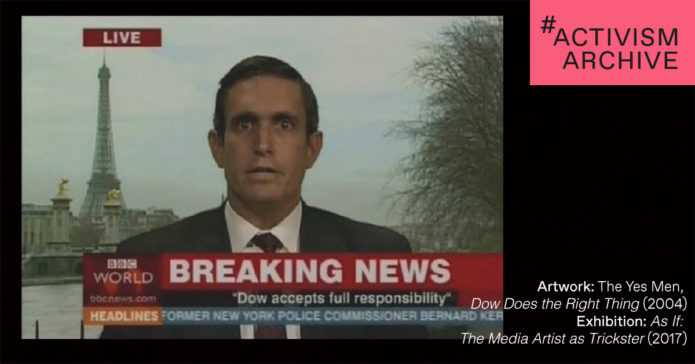
As the announcement sent Dow’s stocks plummeting, The Yes Men revealed the power of deceptive media intervention in influencing reality. Today, The Yes Men continue to target major polluting companies, bluntly deriding their ‘greenwashing’ tactics through parody advertisements and websites. While the collective’s stunts are often laughable, their disruption of the media landscape creates a critical space for discussion and the imagination of alternative futures.
Dow Does The Right Thing allows us to briefly experience a world in which companies actually do ‘the right thing’ by taking responsible action for their climate crimes and the devastating harm they cause. When the fiction is pulled away, The Yes Men leave us with both a bitter reminder of our unjust power structures and a vision of a changed political reality.
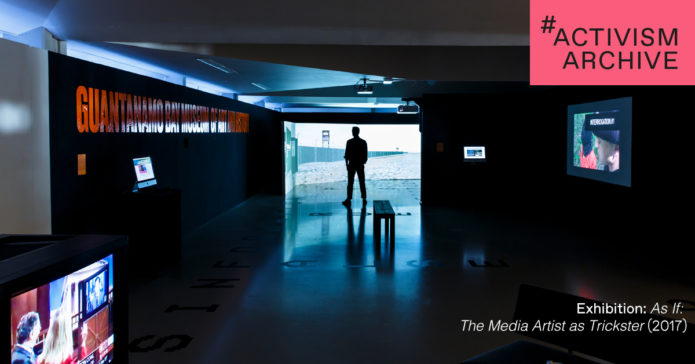
Photo credit: Eva Broekema / Framer Framed
To view The Yes Men’s Dow Does the Right Thing newscast, click here.
Icons of a Nation
The work of Milena Bonilla
Our #ActivismArchive pick for the week is Milena Bonilla’s contribution to HERE/NOW – Current Visions from Colombia (2019) at Framer Framed. In her artistic practice, Bonilla explores representation and consumption. She studies language as a means of colonising knowledge and nature, which are then consumed at large scale through media. HERE/NOW featured her work, Money (2012), a collection of 260 frottages of coins from various countries with depictions of plants and animals.

The Money series calls attention to the iconographic use of plants and animals in nation-building — think of our national birds and flowers. The landscape of a region is poetically intertwined with our conception of it, from plains of farmland and rolling hills to stretches of desert sands or dense jungle. While we employ these symbols to capture the essence of our country’s spirit, we often fail to care for these environments and their native flora and fauna as they exist in the natural world and within our borders. Bonilla thus points to the dissonance, at a societal level, between the idealisation of nature and its exploitative commodification through economic and representational systems.
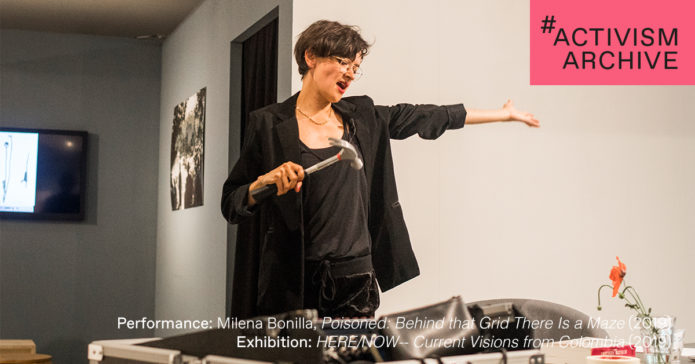
Photo credit: Marlise Steeman / Framer Framed
For the finissage of HERE/NOW, Bonilla performed Poisoned: Behind that Grid There is a Maze (2019), which addresses the exploitation, criminalisation, synthetisation and isolation of Opium. To view, click here.
The Turtle and the Artist
The work of Jennifer Allora & Guillermo Calzadilla
This week, our Friday #ActivismArchive follows the global Earth Day celebrations, which took place on Wednesday 22 April. We are going our furthest yet into the Framer Framed archive to the exhibition Costume Bureau (2014) and a video work by artist duo Jennifer Allora and Guillermo Calzadilla, Amphibious (Login-Logout) (2005).
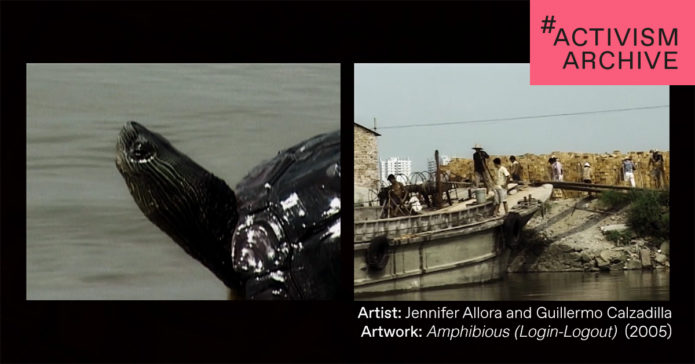
Film stills of ‘Amphibious (Login-Logout)’
The short film follows a group of turtles sitting on a log as it floats along China’s Pearl River Delta. Amphibious cuts between close shots of the turtles and distanced views of the river’s shore, where industry dominates. We watch as people and cars pass swiftly, as cranes and barges move massive shipping containers. Allora and Calzadilla situate the viewer in the perspective of the turtle; the industrialised environment in turn becomes strange and foreign to us. Through this perspectival aligning, we are made to think of the interconnected relationship between the industrial and the natural. The turtle and the river, who undoubtedly felt the effects of human action on their habitats, bodies, and behaviours long before we began to account for it.
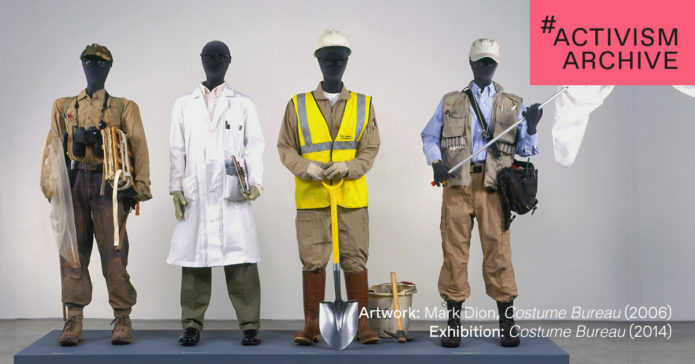
The Costume Bureau (2014) exhibition takes its name from an installation work by Mark Dion from 2006, in which he stages four outfits he has worn during his time as an artist. The outfits symbolise the various roles an artist can take through their practice: researcher, explorer, and – as we hope to show – activist.
Copper and the Colonial Past in the Present
The work of Sammy Baloji
Our addition to the #ActvismArchive this week is Sammy Baloji’s Tales of the Copper Cross Garden, Episode 1 (2017). The film was presented at Framer Framed in Baloji’s solo exhibition, A Blueprint for Toads and Snakes (2018), which staged the artist’s research into the contemporary effects of colonial history in his home country, the Democratic Republic of the Congo (DRC) and, specifically, in Lubumbashi – the capital city of the Katanga province and a major mining region.
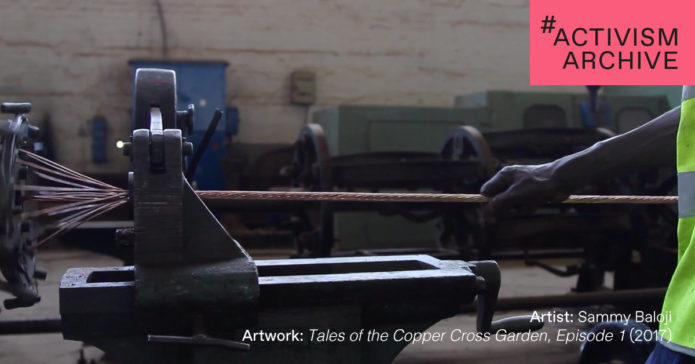
Film still of Sammy Baloji, Tales of the Copper Cross Garden (2017)
Tales of the Copper Cross Garden records the mining industry’s influence in daily life with video of metalworkers shaping raw material into spools of copper wire. The film moves slowly through the factory, capturing a choreography of movement kept in time by the heating and cooling of metal. Baloji layers the audio with songs from the Children’s Choir of the Copper Cross – their presence speaking to the role of the Church in Belgium’s colonisation of the Congo. The choir sings along with the whirring of the machines, their sound emerging as if from the same place.
The film traces the intersections of colonial enterprise and the global economic market with resource depletion and environmental degradation. Baloji documents how colonial heritage is carried into the present and how it will inevitably be carried into the future by the climate-altering effects of the mining industry.

Exhibition photo credit: Eva Broekema / Framer Framed
To view an excerpt from Tales of the Copper Cross Garden, Episode 1, click here. A Blueprint for Toads and Snakes is currently on show in adapted form in Lundskonsthall’s exhibition Other Tales (15 February – 15 May 2020).
Stone, Stillness and Breath
The work of Tuan Mami
For this week’s #ActivismArchive, we look to Tuan Mami’s In One’s Breath–Nothing Stands Still (2014-2017), which Framer Framed presented for the Intersections programme of Art Rotterdam in 2017. The multimedia installation is a product of several years of research by the artist into the pollution, loss of biodiversity, and disruption of local culture in Hà Nam, Vietnam caused by years of exploitative stone mining. The subject is an intimate one for the artist because Hà Nam is also his hometown. In One’s Breath manifests a sort of post-apocalyptic scene that balances between stillness and movement, truth and imagination – it is at once reality and a haunting dream. The disjunctions held together in the space come from Tuan Mami’s own thoughts of his hometown, as he observes its transition from the paradise of his childhood to a site of exploitation.
In researching and materialising his own experience, Tuan Mami diagrams a global situation – a slow, insidious change becoming recognisable over time – caused by our own actions, our prioritisation of human desire in the processes of industrialisation and modernisation. In One’s Breath is also a work of solidarity with the local community and mine workers of Hà Nam and their efforts of protest against the government and mining companies, with the artist’s role as documenting and bringing public attention to the situation.
If you’d like to know more about the work and Tuan Mami’s research process, follow the link to an interview with the artist from 2017.
Earth and Judgement
The work of Fitri DK
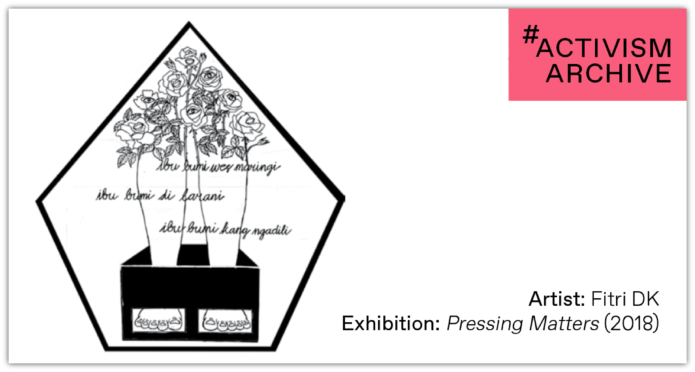
This week we’ve selected a work from Pressing Matters (2018) by artist and writer, Fitri DK. Her design for the exhibition’s 24-sided printing block honors a group of Kendeng women, who protested a cement factory’s pollution of the surrounding area. During their action, the women sat on the ground with their feet in blocks of cement and hummed:
‘Ibu bumi, ibu bumi wis maringi, ibu bumi dilarani, ibu bumi kang ngadili.’ – ‘Mother earth gives, mother earth suffers, Mother Earth will judge.’
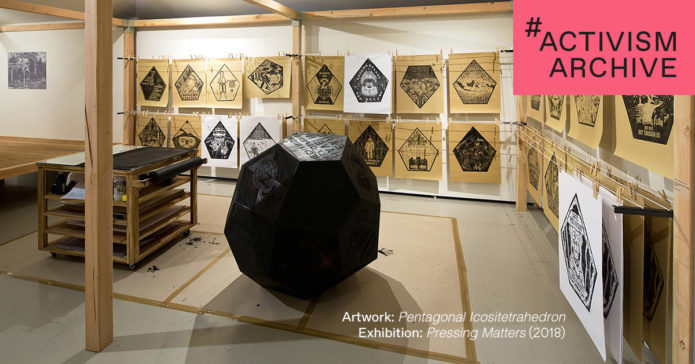
Like the activists of Fitri DK’s artwork, we fight for the protection of the environment today – thinking not only of our own rights but those of future generations to fresh air, clean water, the land, the mountains and the forests.
The #ActivismArchive series is organised by Ashley Maum. This page has been irregularly updated since april 2020.
Art and Activism / Action Research / Crisis Imaginaries / Ecology / Planetary Poetics /
Exhibitions
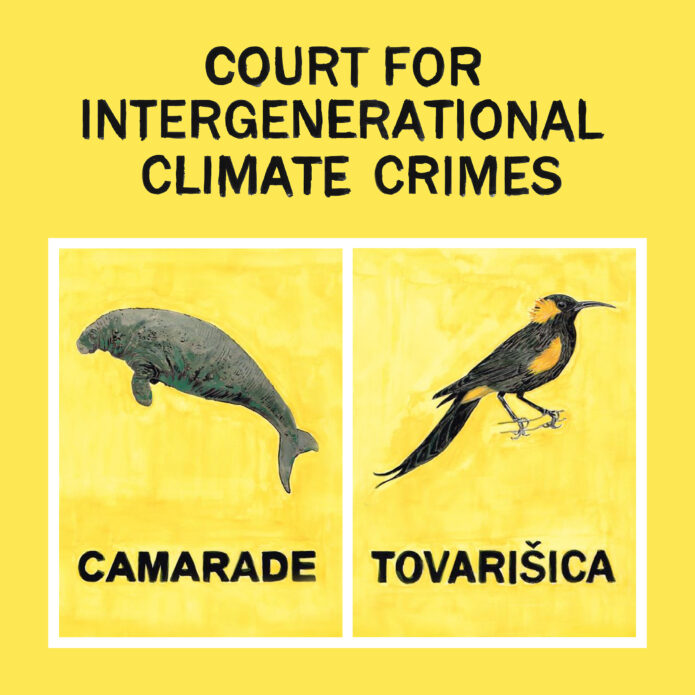
Exhibition: Court for Intergenerational Climate Crimes
A project by Radha D'Souza and Jonas Staal
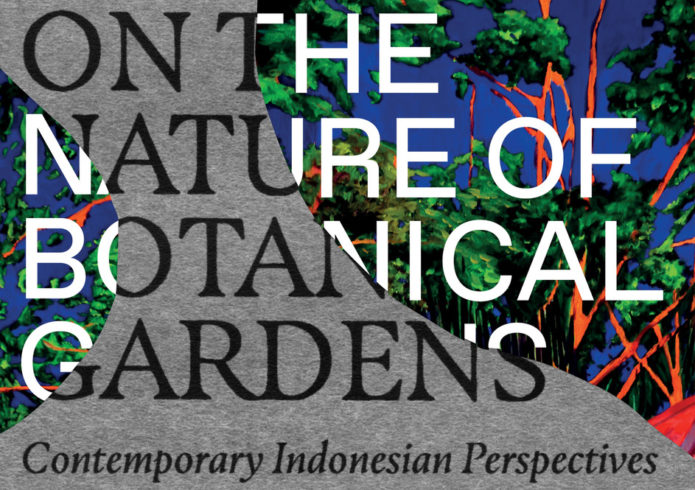
Exhibition: On the Nature of Botanical Gardens
Contemporary indonesian perspectives by nine Indonesian artists
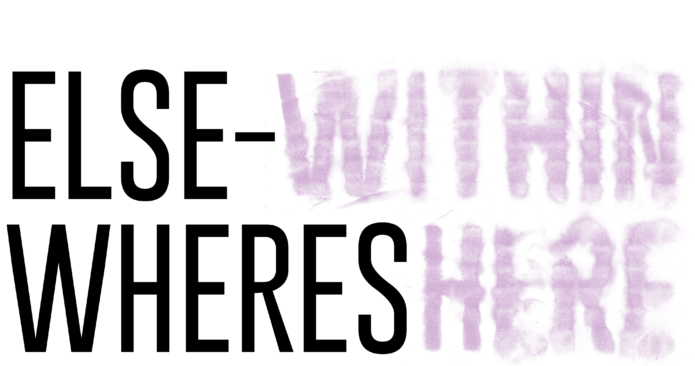
Exhibition: Elsewheres Within Here
Curator: Jo-Lene Ong

Exhibition: HERE/NOW - Current Visions from Colombia
Twenty artists presenting contemporary art and photojournalism created in the context of Colombia.
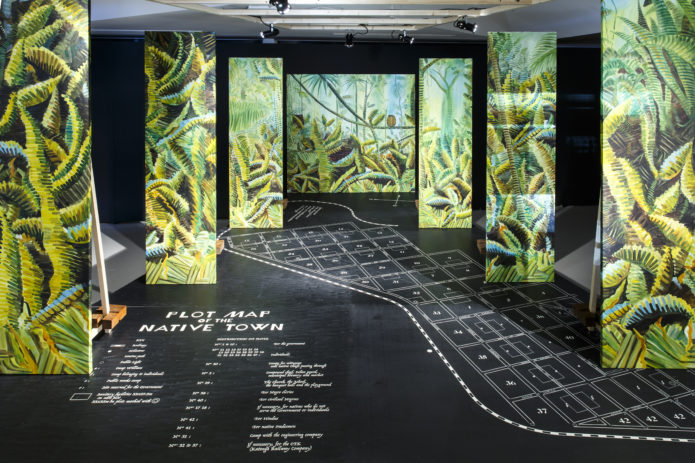
Exhibition: A Blueprint for Toads and Snakes
A solo exhibition by Sammy Baloji
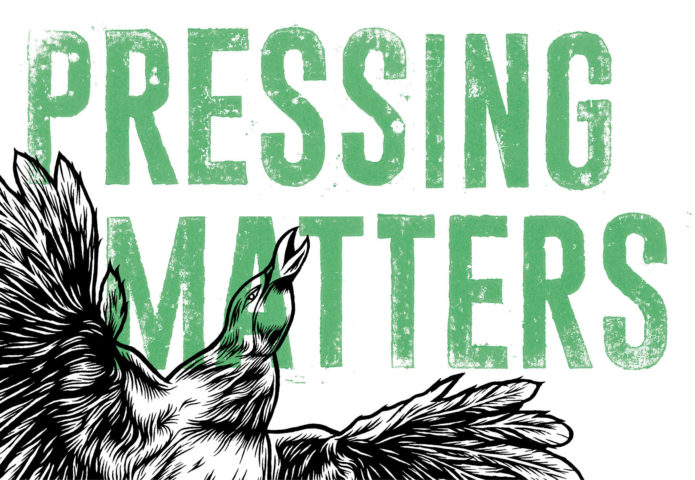
Exhibition: Pressing Matters
Featuring 24 Indonesian artists brought together by artist Kevin van Braak
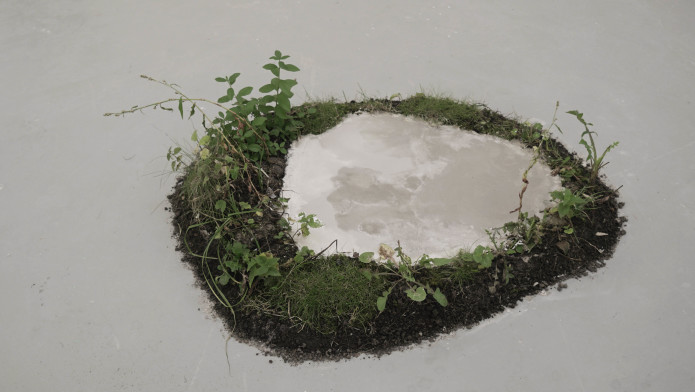
Exhibition: In One's Breath - Nothing Stands Still
Framer Framed is part of international art fair Art Rotterdam (2017) with work by Tuan Mami
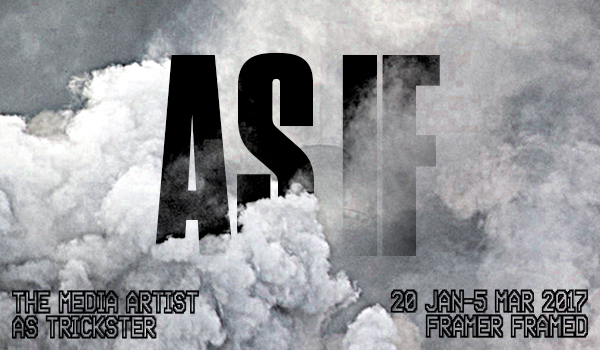
Exhibition: As If - The Media Artist as Trickster
On politically inspired media art that uses deception in all its forms. Curated by Annet Dekker and David Garcia i.c.w. Ian Alan Paul
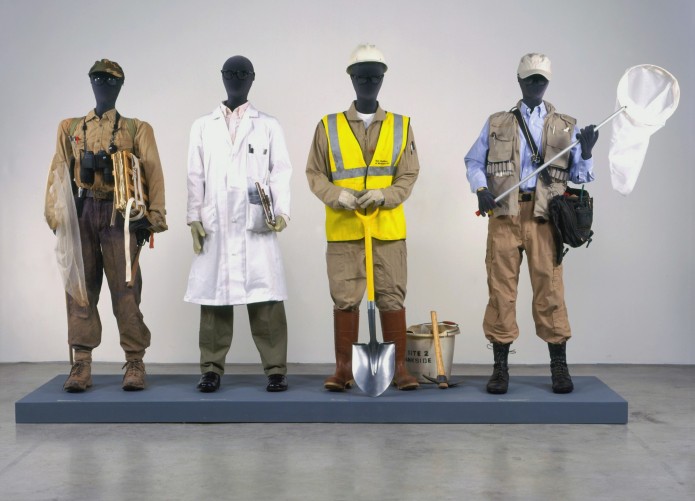
Exhibition: Costume Bureau
A collection presentation of Museum Het Domein, curated by Roel Arkesteijn
Network

Radha D'Souza
Writer, academic, lawyer and activist
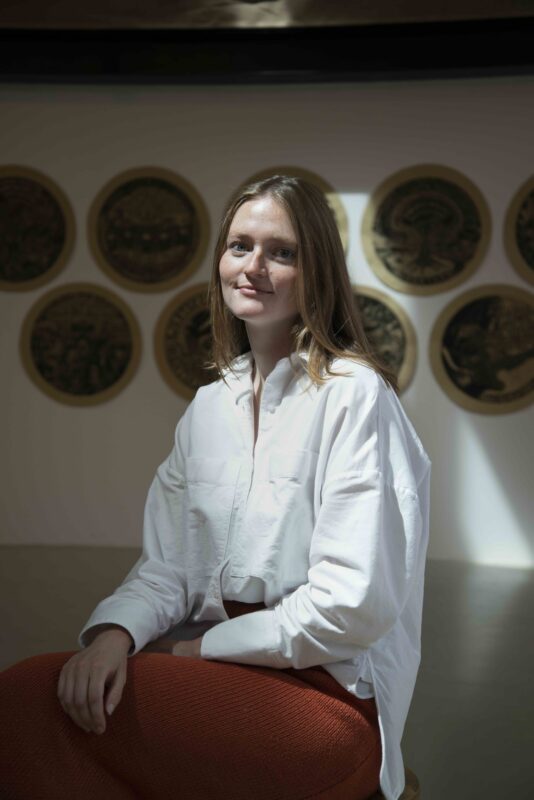
Ashley Maum
Exhibitions and research
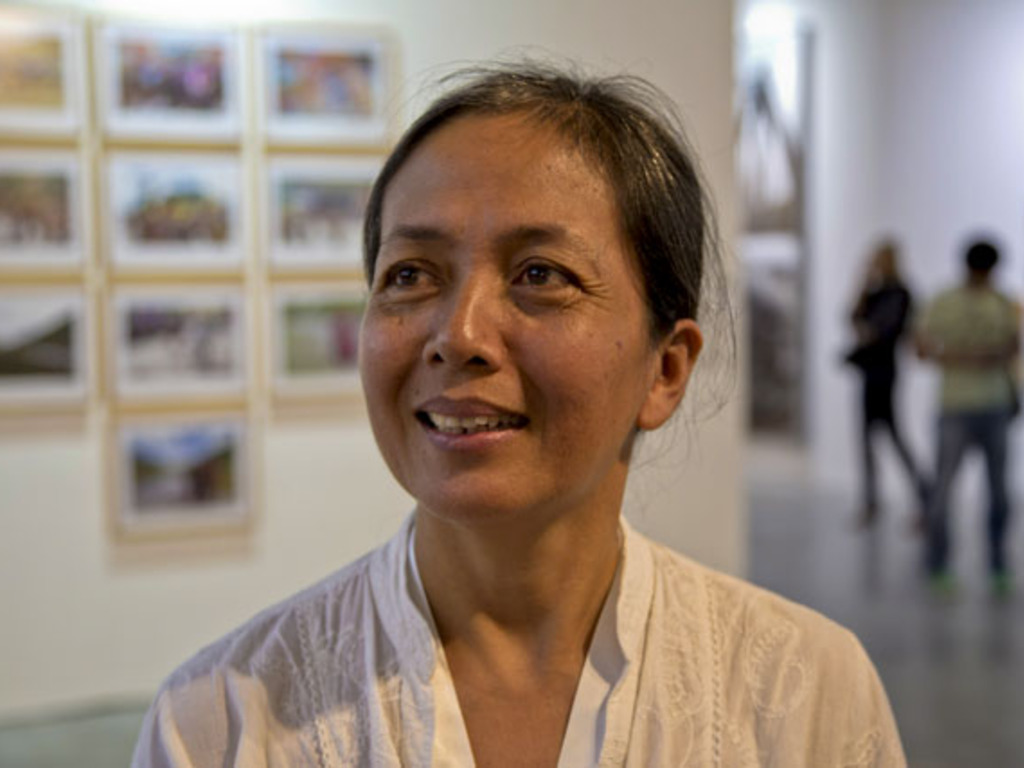
Arahmaiani
Artist

Rumiko Hagiwara
Artist
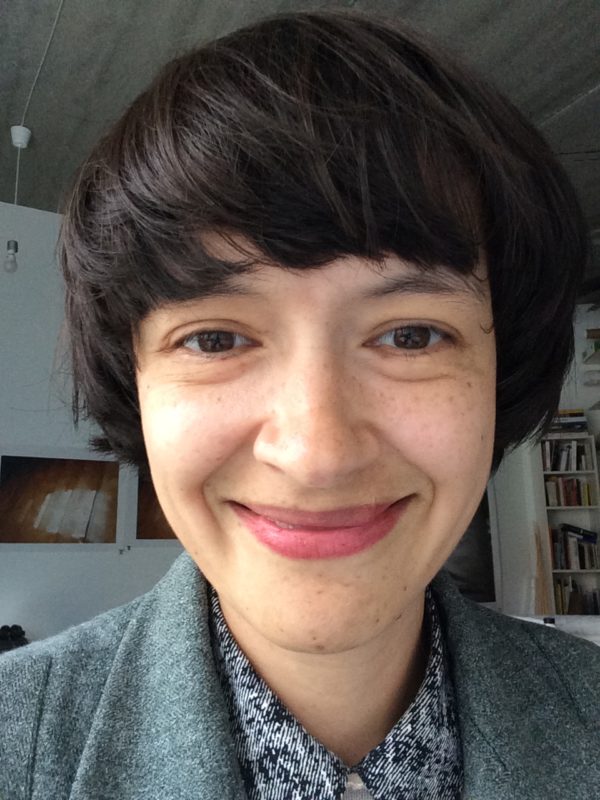
Milena Bonilla
Kunstenaar
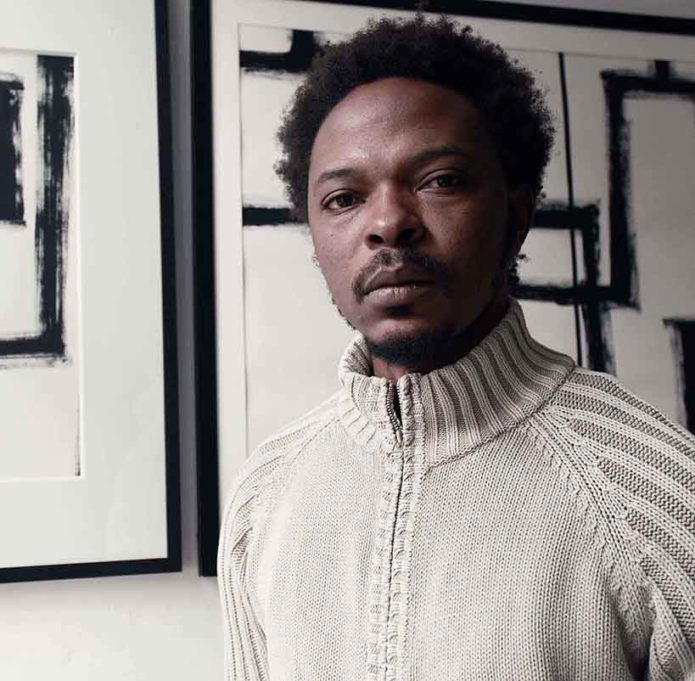
Sammy Baloji
Artist
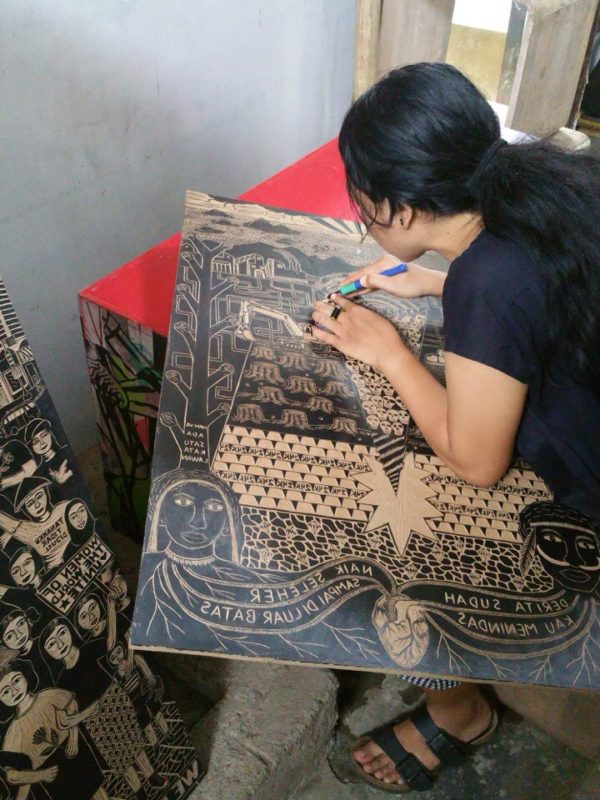
Fitri DK
Artist

Tuan Mami
Artist
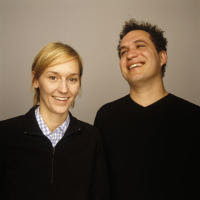
Jennifer Allora and Guillermo Calzadilla
Artists
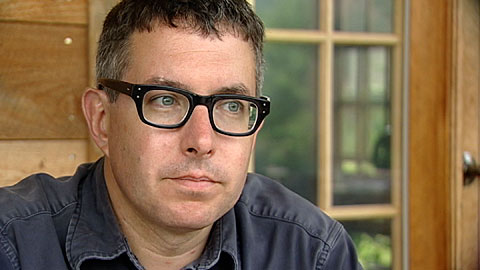
Mark Dion
Artist
